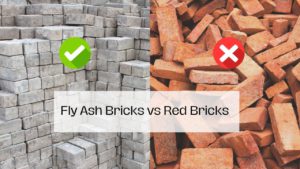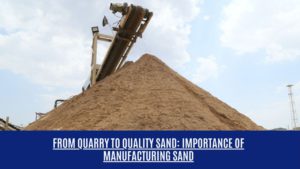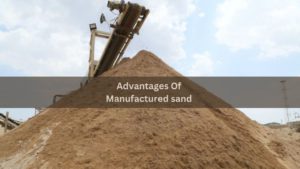Fly ash bricks have become a cornerstone of modern construction, especially in projects that emphasize sustainability, strength, and cost-effectiveness. These eco-friendly bricks, made from fly ash, lime, and gypsum, are known for their uniform shape, high compressive strength, and ability to reduce plaster requirements. However, despite their durability, improper practices at construction sites often lead to unnecessary material loss. Breakage during transport, moisture absorption from poor storage, and careless handling are some of the most common problems. These issues not only increase costs but also affect the overall quality of construction. The purpose of this blog is simple: to provide contractors, site supervisors, and buyers with practical, real-world tips to maintain fly ash bricks effectively on-site. With the right handling, storage, and maintenance strategies, you can ensure durability, minimize wastage, and save significant costs in the long run.
Why Maintenance of Fly Ash Bricks is Crucial
Fly ash bricks are strong and reliable, but like any construction material, they require proper care to retain their benefits. On many sites, careless handling leads to cracks, chips, or moisture damage that could easily have been avoided. For instance, stacking bricks too high without proper support often causes breakage at the bottom layers, while exposure to continuous rain weakens their structure.
Benefits of Proper Maintenance:
- Prevents Damage: Reduces material loss caused by breakage or erosion.
- Saves Costs: Fewer damaged bricks mean lower replacement expenses.
- Improves Durability: Ensures the bricks retain their designed strength during construction.
- Enhances Quality: Leads to stronger walls, reduced plastering, and long-term structural stability.
Think of it this way: every damaged pallet of bricks is money wasted. Effective maintenance not only saves costs but also ensures that your construction project meets both safety and quality standards.
Tips to Maintain Fly Ash Bricks on Site
Handling is often where most damage occurs. From unloading trucks to moving bricks across the site, small mistakes can lead to significant losses. Here’s how to do it right:
Proper Unloading Techniques
- Avoid dropping bricks directly from height during unloading.
- Use mechanical aids like forklifts, cranes, or hand trolleys wherever possible.
- Train workers to handle bricks carefully during manual unloading.
Safe Lifting and Carrying
- Lift bricks with both hands, keeping them upright.
- Avoid carrying too many bricks at once to reduce the risk of slips or drops.
- Workers should wear gloves to prevent cuts and provide better grip.
Stacking During Movement
- Transport bricks on flat, stable surfaces to prevent tilting or falling.
- Use wheelbarrows or trolleys for short-distance movement across uneven ground.
Safety Precautions for Workers
- Provide protective equipment like helmets, gloves, and safety shoes.
- Train teams in correct lifting techniques to avoid back injuries.
Pro Tip: Always designate a safe unloading and stacking zone near the construction site to minimize unnecessary movement.
Storage Best Practices on Construction Sites
Safe storage of fly ash bricks plays a major role in maintaining their durability. Poor storage is often the biggest reason behind water damage, cracks, or weakening of the material.
Guidelines for Proper Storage:
- Prepare a Solid Base
- Always store bricks on a raised, dry platform.
- A wooden pallet, stone base, or plastic sheet prevents direct contact with soil and moisture.
- Stacking Height and Method
- Do not stack bricks higher than 6–7 feet to avoid pressure cracks in lower layers.
- Arrange them in a zig-zag or crosswise manner to provide extra stability.
- Protection from Weather
- To ensure the safe storage of fly ash bricks, cover stacks with waterproof sheets or tarpaulins to prevent rain damage.
- During extreme heat, ensure the bricks are shaded to avoid surface cracks from prolonged exposure.
- Separate Storage Areas
- Keep new bricks separate from damaged ones.
- Clearly mark areas for ready-to-use and stored materials.
By following these practices, you not only prevent damage but also ensure the bricks remain ready-to-use without additional preparation or rejections.
On-Site Maintenance & Quality Checks
Regular inspections are just as important as initial storage and handling. Bricks can develop issues even after careful storage if not checked frequently.
How to Maintain Bricks on Site:
- Routine Inspection: Check for cracks, chips, or moisture patches weekly.
- Segregation of Damaged Bricks: Immediately remove damaged bricks from the main stack to prevent confusion during construction.
- Keep Bricks Clean: Dust and dirt buildup can reduce bonding strength with mortar. A light cleaning before use ensures better adhesion.
- Moisture Monitoring: Ensure tarpaulins or covers are intact and water isn’t seeping through.
These simple yet effective practices allow supervisors to maintain high-quality standards throughout the project lifecycle.
Cost and Time Benefits of Proper Maintenance
One of the biggest advantages of maintaining fly ash bricks properly is cost-effectiveness.
- Reduced Breakage: Minimizes the need to purchase extra bricks to cover losses.
- Lower Labour Costs: Proper handling reduces time spent re-stacking or clearing broken pieces.
- Efficient Workflow: With well-maintained materials, work progresses faster without interruptions.
- Fewer Delays: Moisture-damaged bricks often need drying time, which slows down construction. Preventing this saves days on the project timeline.
Even a 5–10% reduction in brick wastage can translate into thousands of rupees saved on medium to large construction projects.
Conclusion: Smart Maintenance for Stronger Projects
Fly ash bricks are among the most reliable and eco-friendly materials for modern construction. But to get the best out of them, proper handling, storage, and maintenance practices are essential. By reducing breakage, protecting from moisture, and ensuring regular inspections, contractors and supervisors can save costs while maintaining project quality.
If you’re looking for high-quality fly ash bricks, trust Raj Mineral for durable, eco-friendly, and cost-effective solutions. Connect with us today to make your construction project stronger and more sustainable.











